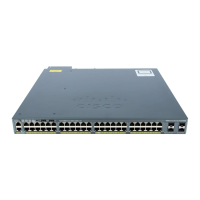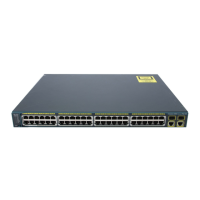Information About UDLD
UniDirectional Link Detection (UDLD) is a Layer 2 protocol that enables devices connected through fiber-optic
or twisted-pair Ethernet cables to monitor the physical configuration of the cables and detect when a
unidirectional link exists. All connected devices must support UDLD for the protocol to successfully identify
and disable unidirectional links. When UDLD detects a unidirectional link, it disables the affected port and
alerts you. Unidirectional links can cause a variety of problems, including spanning-tree topology loops.
Modes of Operation
UDLD supports two modes of operation: normal (the default) and aggressive. In normal mode, UDLD can
detect unidirectional links due to misconnected ports on fiber-optic connections. In aggressive mode, UDLD
can also detect unidirectional links due to one-way traffic on fiber-optic and twisted-pair links and to
misconnected ports on fiber-optic links.
In normal and aggressive modes, UDLD works with the Layer 1 mechanisms to learn the physical status of
a link. At Layer 1, autonegotiation takes care of physical signaling and fault detection. UDLD performs tasks
that autonegotiation cannot perform, such as detecting the identities of neighbors and shutting down
misconnected ports. When you enable both autonegotiation and UDLD, the Layer 1 and Layer 2 detections
work together to prevent physical and logical unidirectional connections and the malfunctioning of other
protocols.
A unidirectional link occurs whenever traffic sent by a local device is received by its neighbor but traffic from
the neighbor is not received by the local device.
Normal Mode
In normal mode, UDLD detects a unidirectional link when fiber strands in a fiber-optic port are misconnected
and the Layer 1 mechanisms do not detect this misconnection. If the ports are connected correctly but the
traffic is one way, UDLD does not detect the unidirectional link because the Layer 1 mechanism, which is
supposed to detect this condition, does not do so. In this case, the logical link is considered undetermined,
and UDLD does not disable the port.
When UDLD is in normal mode, if one of the fiber strands in a pair is disconnected, as long as autonegotiation
is active, the link does not stay up because the Layer 1 mechanisms detects a physical problem with the link.
In this case, UDLD does not take any action and the logical link is considered undetermined.
Related Topics
Enabling UDLD Globally, on page 171
Enabling UDLD on an Interface, on page 172
Aggressive Mode
In aggressive mode, UDLD detects a unidirectional link by using the previous detection methods. UDLD in
aggressive mode can also detect a unidirectional link on a point-to-point link on which no failure between the
two devices is allowed. It can also detect a unidirectional link when one of these problems exists:
•
On fiber-optic or twisted-pair links, one of the ports cannot send or receive traffic.
•
On fiber-optic or twisted-pair links, one of the ports is down while the other is up.
Catalyst 2960-XR Switch Layer 2 Configuration Guide, Cisco IOS Release 15.0(2)EX1
168 OL-29424-01
Configuring UniDirectional Link Detection
Information About UDLD

